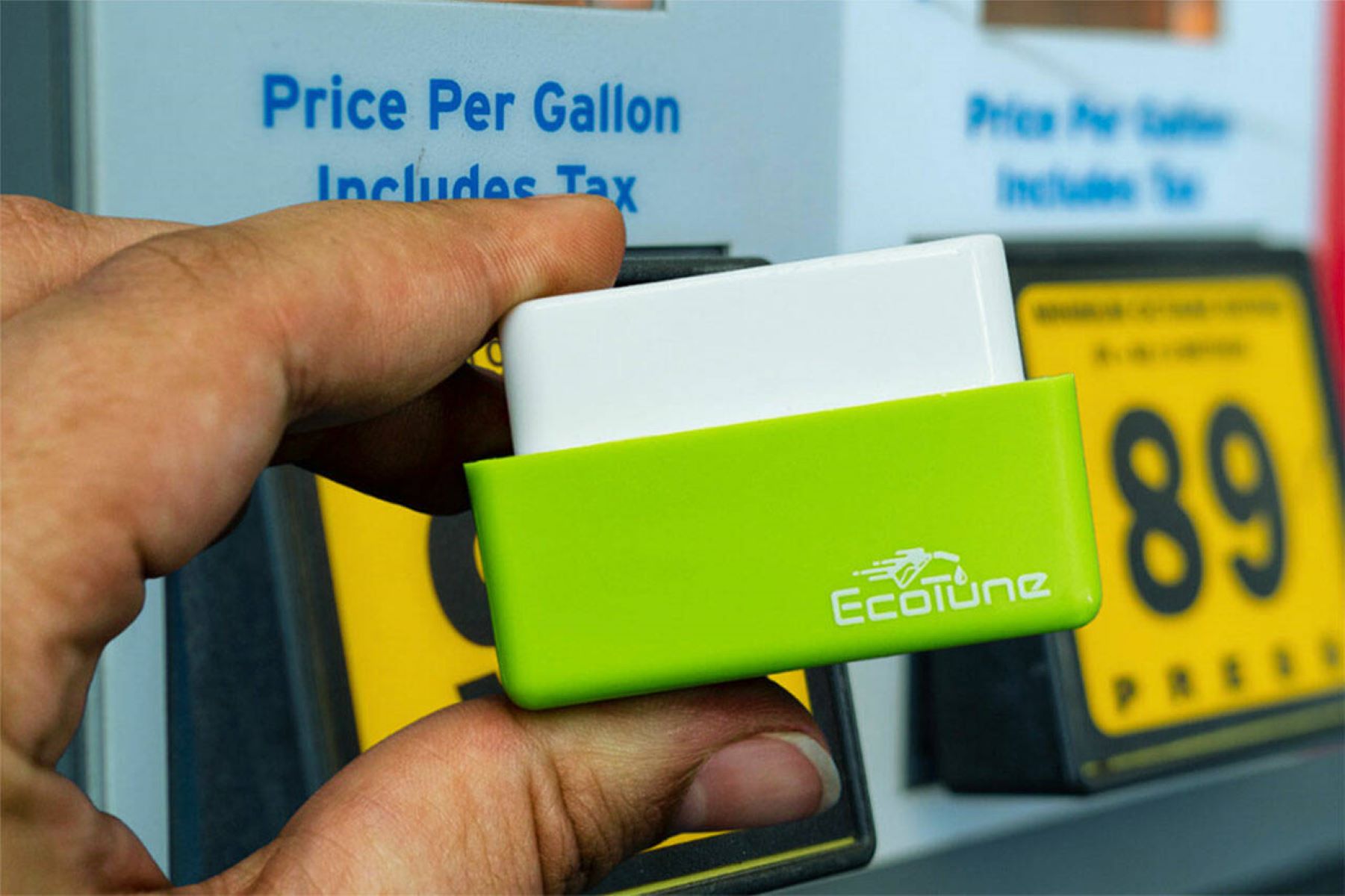Home>Automotive>The Ultimate Guide To Driving In Zero Visibility!


Automotive
The Ultimate Guide To Driving In Zero Visibility!
Modified: April 1, 2024
Learn essential tips and techniques for driving in zero visibility conditions with our comprehensive automotive guide. Stay safe on the road with expert advice and strategies!
(Many of the links in this article redirect to a specific reviewed product. Your purchase of these products through affiliate links helps to generate commission for Regretless.com, at no extra cost. Learn more)
Table of Contents
Introduction
Driving in zero visibility conditions can be an unnerving experience. Whether it's due to heavy fog, snow, or torrential rain, encountering zero visibility on the road poses significant challenges for even the most experienced drivers. In such situations, the ability to navigate safely becomes a critical concern, demanding heightened awareness and a strategic approach to handling the vehicle. Understanding the nuances of driving in zero visibility is essential for ensuring the safety of both the driver and other road users.
In this comprehensive guide, we will delve into the intricacies of zero visibility driving, providing valuable insights and practical tips to help you navigate through these challenging conditions with confidence. From understanding the factors contributing to zero visibility to preparing your vehicle and yourself for such scenarios, we will cover all aspects critical to ensuring a safe and secure driving experience.
By equipping yourself with the knowledge and strategies outlined in this guide, you can enhance your ability to tackle zero visibility conditions effectively, mitigating the inherent risks associated with such challenging driving environments. Let's embark on this journey to explore the essential principles and best practices that are indispensable for mastering the art of driving in zero visibility!
Understanding Zero Visibility
Zero visibility refers to environmental conditions that severely impair a driver's ability to see and navigate effectively. These conditions can arise due to various factors such as thick fog, heavy snowfall, intense rain, or even dust storms. When visibility is reduced to near-zero levels, the risks associated with driving escalate significantly, demanding heightened vigilance and strategic decision-making from the driver.
The primary cause of zero visibility is often attributed to atmospheric phenomena that obstruct the line of sight, making it challenging to discern objects, road markings, and other vehicles. Fog, for instance, occurs when moisture in the air condenses into tiny water droplets, creating a dense mist that obscures the surroundings. In the case of heavy snowfall, the accumulation of snowflakes can blanket the landscape, drastically limiting visibility. Similarly, torrential rain can create a deluge that hampers visibility, posing a formidable challenge for drivers.
In addition to natural phenomena, human-made factors such as industrial pollution, smoke from wildfires, and vehicular emissions can contribute to zero visibility conditions. These factors can exacerbate the already challenging task of driving, necessitating a proactive and cautious approach to mitigate potential hazards.
Understanding the dynamics of zero visibility is crucial for drivers, as it enables them to anticipate and adapt to these conditions effectively. By recognizing the distinct characteristics of various visibility-reducing phenomena, drivers can make informed decisions regarding their driving behavior, route selection, and overall risk management. Furthermore, comprehending the impact of zero visibility on traffic flow and the behavior of other drivers is essential for maintaining a safe and orderly driving environment.
In essence, zero visibility presents a formidable challenge for drivers, requiring a comprehensive understanding of the contributing factors and their implications. By gaining insights into the nature of zero visibility conditions, drivers can equip themselves with the knowledge and awareness necessary to navigate through these challenging scenarios safely and confidently.
Preparing for Zero Visibility Driving
Preparing for zero visibility driving entails a proactive approach that encompasses both vehicle readiness and driver readiness. As drivers, it is crucial to recognize the inherent risks associated with zero visibility conditions and take preemptive measures to enhance safety and preparedness. Here are essential steps to consider when preparing for zero visibility driving:
-
Vehicle Maintenance: Ensuring that your vehicle is in optimal condition is paramount before venturing into zero visibility scenarios. Regular maintenance checks, including inspecting the headlights, taillights, and fog lights, are imperative. Proper functioning of these lights is essential for enhancing visibility and making your vehicle more conspicuous to other drivers. Additionally, examining the windshield wipers and replacing worn-out blades is crucial for maintaining clear visibility during heavy rain or snow.
-
Tire Inspection: Checking the condition and tread depth of your tires is vital for navigating through zero visibility conditions. Adequate tire traction is essential for maintaining control and stability on slippery roads. Consider equipping your vehicle with snow tires or all-weather tires designed to provide enhanced grip in challenging weather conditions.
-
Fluid Levels: Verifying the levels of essential fluids such as windshield washer fluid, coolant, and oil is imperative. Adequate windshield washer fluid is crucial for keeping the windshield clear in adverse weather, while proper coolant levels prevent engine overheating. Additionally, ensuring that the oil is at the recommended level contributes to the smooth operation of the vehicle under challenging conditions.
-
Emergency Kit: Equipping your vehicle with an emergency kit tailored to zero visibility driving scenarios is a prudent step. The kit should include items such as a flashlight, reflective warning triangles, a first-aid kit, extra blankets, non-perishable food, and water. In the event of being stranded in zero visibility conditions, having essential supplies can provide comfort and safety until assistance arrives.
-
Driver Preparedness: Prior to embarking on a journey in conditions prone to zero visibility, it is essential for drivers to be well-rested and alert. Fatigue can significantly impair a driver's ability to react swiftly in challenging situations. Additionally, familiarizing oneself with the planned route and considering alternative routes in case of unexpected road closures or detours is advisable.
By diligently preparing for zero visibility driving, drivers can significantly mitigate the risks associated with such challenging conditions. Proactive vehicle maintenance, equipped with essential supplies, and a heightened state of driver readiness are crucial elements in ensuring a safe and secure driving experience in zero visibility scenarios.
Tips for Driving in Zero Visibility
Navigating through zero visibility conditions demands a strategic approach and heightened vigilance from drivers. Here are essential tips to enhance safety and confidence when driving in scenarios with severely impaired visibility:
1. Reduce Speed and Increase Following Distance
When encountering zero visibility conditions, it is imperative to reduce your driving speed significantly. Slowing down allows for better reaction time and increases the margin of safety. Additionally, increasing the following distance between your vehicle and the one ahead provides ample space for sudden braking or maneuvering, reducing the risk of collisions.
2. Utilize Low-Beam Headlights and Fog Lights
Switching on low-beam headlights and fog lights can improve visibility in adverse weather conditions. These lights enhance the visibility of the road ahead while making your vehicle more conspicuous to other drivers. However, it is crucial to refrain from using high-beam headlights, as they can reflect off the moisture particles in the air, further impairing visibility.
3. Stay Focused and Avoid Distractions
Maintaining unwavering focus on the road and surroundings is paramount in zero visibility conditions. Minimize distractions such as adjusting the radio, using mobile devices, or engaging in lengthy conversations. By staying attentive, you can better anticipate potential hazards and react promptly to unexpected situations.
4. Use Road Markings and Reflective Signage as Guides
In situations where visibility is severely limited, relying on road markings and reflective signage can serve as crucial navigational aids. Staying within the lane markings and following the guidance of reflective signs can help maintain a sense of direction and prevent veering off the road or into oncoming traffic.
5. Exercise Caution at Intersections and Junctions
Approaching intersections and junctions in zero visibility conditions requires heightened caution. Proceed with reduced speed, be prepared to yield to other vehicles, and use turn signals early to communicate your intentions to other drivers. Clear communication and cautious maneuvering are essential for avoiding potential collisions at these critical points.
6. Avoid Sudden Maneuvers and Braking
In zero visibility scenarios, sudden maneuvers and abrupt braking can lead to loss of control and potential accidents. Smooth and gradual movements, including steering and braking, are essential for maintaining stability and traction on slippery or obscured road surfaces.
7. Consider Alternative Routes and Postpone Non-Essential Travel
When severe zero visibility conditions are forecasted or encountered, evaluating the necessity of travel is crucial. If possible, consider postponing non-essential trips until visibility improves. Alternatively, exploring alternative routes that may offer better visibility and reduced traffic congestion can contribute to a safer and more manageable driving experience.
By adhering to these essential tips, drivers can navigate through zero visibility conditions with greater confidence and safety, mitigating the inherent risks associated with challenging weather phenomena. Prioritizing caution, maintaining focus, and adapting driving behavior to suit the prevailing conditions are fundamental in ensuring a secure and controlled driving experience in scenarios with severely impaired visibility.
Conclusion
In conclusion, mastering the art of driving in zero visibility conditions is a critical skill that demands a combination of preparedness, strategic decision-making, and heightened vigilance. By understanding the contributing factors and implications of zero visibility, drivers can equip themselves with the knowledge necessary to navigate through these challenging scenarios safely and confidently.
The proactive approach to vehicle maintenance, including checking essential components such as lights, tires, and fluid levels, is paramount in preparing for zero visibility driving. Additionally, the inclusion of an emergency kit tailored to such scenarios ensures that drivers are equipped to handle unexpected challenges effectively.
When faced with zero visibility conditions, drivers must exercise caution, reduce speed, and increase following distance to enhance safety. Utilizing low-beam headlights and fog lights, staying focused, and relying on road markings and reflective signage as navigational aids are essential strategies for mitigating the risks associated with severely impaired visibility.
Furthermore, the importance of exercising caution at intersections, avoiding sudden maneuvers and braking, and considering alternative routes or postponing non-essential travel cannot be overstated. These measures contribute to a safer and more controlled driving experience in adverse weather conditions.
By adhering to the tips and best practices outlined in this guide, drivers can navigate through zero visibility scenarios with confidence, ensuring the safety of themselves and other road users. Embracing a proactive and cautious approach, coupled with a deep understanding of the nuances of zero visibility driving, empowers drivers to tackle these challenging conditions effectively.
Ultimately, the ability to navigate through zero visibility conditions hinges on a combination of preparedness, prudent decision-making, and a commitment to safety. By integrating the insights and strategies presented in this guide into their driving practices, individuals can enhance their capability to tackle zero visibility scenarios, transforming these challenging conditions into manageable and controlled driving experiences.













